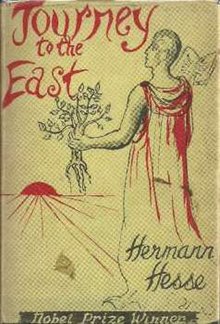
Hermann Karl Hesse was a German-Swiss poet, novelist, and painter. Although Hesse was born in Germany's Black Forest region of Swabia, his father's celebrated heritage as a Baltic German and his grandmother's French-Swiss roots had an intellectual influence on him. He was a precocious, if not difficult child, who shared a passion for poetry and music with his mother, and was especially well-read and cultured, due in part to the influence of his polyglot grandfather.

In Greek mythology, Narcissus was a hunter from Thespiae in Boeotia who was known for his beauty which was noticed by all, regardless of gender. According to the best known version of the story, by Ovid, Narcissus rejected all advances, eventually falling in love with a reflection in a pool of water, tragically not realizing its similarity, entranced by it. In some versions, he beat his breast purple in agony at being kept apart from this reflected love, and in his place sprouted a flower bearing his name.
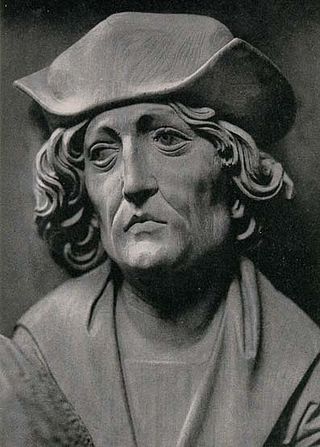
Tilman Riemenschneider was a German sculptor and woodcarver active in Würzburg from 1483. He was one of the most prolific and versatile sculptors of the transition period between the Late Gothic, to which he essentially belonged, and Northern Renaissance art, a master in stone and limewood. He was also a local politician in the council of Würzburg.

Notes from Underground is a novella by Fyodor Dostoevsky first published in the journal Epoch in 1864. It is a first-person narrative in the form of a "confession". The work was originally announced by Dostoevsky in Epoch under the title "A Confession".

Kansas is the debut studio album by American progressive rock band Kansas, released in 1974 by Kirshner in the United States and Epic Records in other countries.
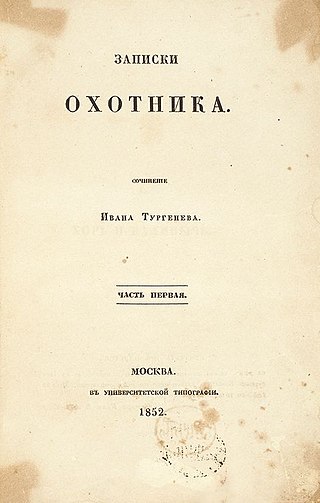
A Sportsman's Sketches is an 1852 cycle of short stories by Ivan Turgenev. It was the first major writing that gained him recognition.

Narcissus and Goldmund, also published in English as Death and the Lover, is a novel written by the German-Swiss author Hermann Hesse which was first published in 1930. At its publication, Narcissus and Goldmund was considered Hesse's literary triumph; chronologically, it follows Steppenwolf.

Peter Camenzind, published in 1904, was the first novel by Hermann Hesse. It contains a number of themes that were to preoccupy the author in many of his later works, most notably the individual's search for a unique spiritual and physical identity amidst the backdrops of nature and modern civilization, and the role of art in the formation of personal identity.

Kinderseele ("child-soul") is a short story written by Hermann Hesse. He wrote it between the end of 1918 and the beginning of 1919, at the age of 41. At that time Hesse lived in Bern, Switzerland, where he emigrated to after he had lost his father in 1916, and while his wife and one of his three sons had fallen seriously ill. In addition, he himself was under psychiatric treatment. Kinderseele was published in November 1919 in Die deutsche Rundschau under the pen name Emil Sinclair. It then appeared under his name in the anthology Klingsors letzter Sommer in 1920.

Metamorphosis of Narcissus (1937) is an oil-on-canvas painting by the Spanish surrealist Salvador Dalí. Originally titled Métamorphose de Narcisse, This painting is from Dalí's paranoiac-critical period and depicts his interpretation of the Greek myth of Narcissus. Dalí began his painting in the spring of 1937 while in Zürs, in the Austrian Alps.

Empire Star is a 1966 science fiction novella by Samuel R. Delany. It is often published together with another book, most frequently with The Ballad of Beta-2. Delany hoped to have it first published as part of an Ace Double with Babel-17, but instead it was published with Tree Lord of Imeten by Tom Purdom. It was finally bundled with Babel-17 in a 2001 reprint.
Robert Kiefner Greenleaf (1904–1990) was the founder of the modern servant leadership movement and the Greenleaf Center for Servant Leadership.
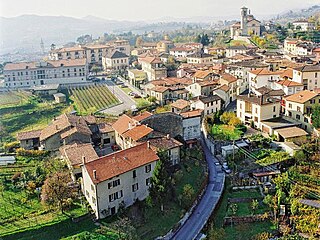
Morbio Inferiore is a municipality in the canton of Ticino in Switzerland in the hills above Chiasso. It is located in the district of Mendrisio.
"The Snowstorm" is a short story by the Russian author Leo Tolstoy. It was first published in 1856, in the literary and political magazine Sovremennik.

Bawarchi is a 1972 Indian Hindi-language musical comedy drama film directed by Hrishikesh Mukherjee and produced by Mukherjee himself along with N.C. Sippy and Romu N. Sippy. Released in India on 7 July 1972, the film stars an ensemble cast of Rajesh Khanna, Jaya Bhaduri, Asrani, Harindranath Chattopadhyay, A.K. Hangal, Durga Khote, Manisha, Kali Banerjee, Usha Kiran and Raju Shrestha. The film was ranked the eight highest-grossing film of the year 1972. In an interview, Khanna quoted "In Bawarchi, I did exactly the opposite of what Hrishida had made me do in Anand (1971). He allowed me to interpret the role and perform my way. I had done enough intense roles, and Bawarchi gave me the opportunity to interpret and perform the role the way I wanted. So I let myself go."

"Medusa's Coil" is a short story by H. P. Lovecraft and Zealia Bishop. It was first published in Weird Tales magazine in January 1939, two years after Lovecraft's death. The story concerns the son of an American plantation owner who brings back from Paris a new wife. It mixes elements of Lovecraft's Cthulhu Mythos with the ancient Greek myth of Medusa, but it has also been noted for its racist aspects.
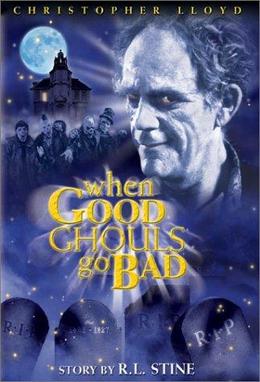
When Good Ghouls Go Bad is a 2001 Fox Family television film directed by Patrick Read Johnson, commissioned for the network's 13 Nights of Halloween program block.
"The Shambler from the Stars" is a horror short story by American writer Robert Bloch, first published in the September 1935 issue of Weird Tales. It was later included as part of his first published book, The Opener of the Way (1945), and his 1994 collection The Early Fears. A Cthulhu Mythos tale, it introduced the forbidden tome De Vermis Mysteriis. Later on in 1935, Lovecraft wrote the short story "The Haunter of the Dark" as a sequel and dedicated it to Bloch. Eventually, in 1950, Bloch wrote his own sequel "The Shadow from the Steeple".
"The Plattner Story" is a short story by English writer H. G. Wells, first published in 1896 in The New Review. It was included in The Plattner Story and Others, a collection of short stories by Wells first published in 1897, and in The Country of the Blind and Other Stories, a collection of his short stories first published in 1911. In the story, a man recounts his experiences in a parallel world, which he speculates is some form of Afterlife.

Knulp is a series of three tales by Hermann Hesse, published in 1915 by S. Fischer Verlag. The three episodes are about a vagrant called Knulp. Hesse wrote these tales between 1907 and 1914 and they are considered to be part of his “Gerbersau” cycle.
